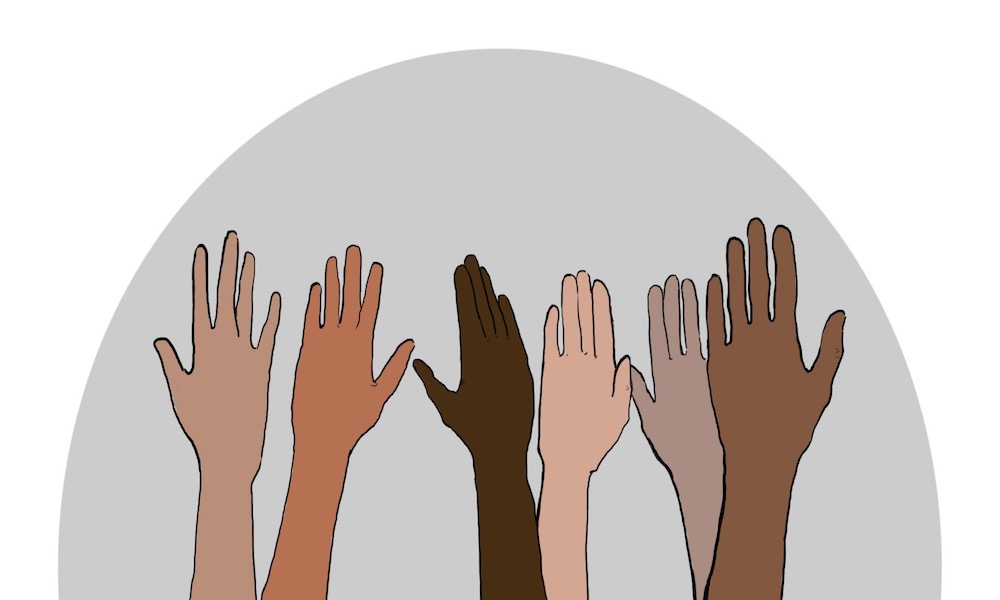
by Ragini Srikrishna – Follow @browngirlmag
Inclusion is far from reality in the lived experiences of brown women, even in New York.
“I just can’t get behind the whole transgender issue,” my art teacher told me.
I looked at her, confused, and gave her a what-do-you-mean look.
“Well, I understand race and racism as an issue in America. If you see people coming into our country, that’s a whole issue…” she trailed off.
I get it. I was the only brown person in the art studio at that moment. My teacher, who changed the topic to another issue, didn’t stop me from redirecting the conversation back to our original topic.
“Well, we have had a nude model in here and I have seen their penis and male body parts, but they preferred to be called she,” she continued.
I nodded as I listened and tried to hide my exasperation.
My teacher, who is 60 years old, is an amazing artist and I’ve grown to admire her teaching methods.
“Maybe it’s my age. I have breastfed four children and I see it as a freedom of speech issue,” she offered.
Classic. She brought up biology and freedom of speech.
“What do you mean?” I asked. She looked at me, stroking her hair, and said, “It’s going to be the first thought that comes to my mind, where I think ‘he’ and I have to stop myself. Then say ‘she.’” “Well, it’s not about us,” I replied, not wanting to start a discussion that, in my experience, could easily turn into a fight.
“Could I look at my teacher the same way ever again?” I had feared.
I had recently moved to New York City. These studio sessions were becoming an anchor for my weekend routine. I had boasted to my parents over the last few weeks how diverse and body positive my studio was. I had even made a friend.
Before the move, I’d lived in Ohio and Illinois — two Midwestern states that are not very diverse. New York would be different, I felt. Yet I remained cautious, not unveiling my inner social justice warrior at work, to my roommates or in most new social settings.
I did not handle the situation well that Saturday morning.
As the class switched to a new project, I quietly packed my things and left. I was upset with myself at multiple levels. I should have confronted my teacher. Why didn’t the others speak up? As a woman of color, how reliable of an ally am I if I don’t stand up to transphobia in the name of intersectionality?
Even as such thoughts were swirling in my head, I called my mom and vented to her about my teacher. My mom tried hard to understand, but I suspected she, too, was grappling with all the social justice concepts that my sister and I bombard her with. She has learned to listen and certainly tries to be supportive.
After that call and a long walk, I was a little calmer and was no longer thinking, “I’ll never go back to that studio.” My first response to transphobia was anger. Anger was what drove me to cut my class short and vent to my mom. By the time I got to Union Square Park, disbelief and denial kicked in. “This can’t be happening in New York.”
I tried to rationalize what happened. “Maybe it’s because of her age — if she were younger, she’d feel and act differently.” I was confused and unclear about what was the right action on my part. This was not something in the abstract, about “those people.” I was dealing with a specific human whom I respect because they are very skilled at their art. “If you are trying to change someone you have to engage”; yet it’s hard not to be judgmental and wonder, “Am I being complicit?”
Over the next few days, my confusion evolved to self-examination. “Do I want to say something because I want to effect change or because I’ll feel good about it?” It is then that I realized how real an influence Martin Niemöller was on me. His writing “First they came for the socialists…” continues to resonate with me. “Then they came for me—and there was no one left to speak for me.” I don’t want anyone to ever get to this point.
The next Saturday, I returned to the same art class. A Frida Kahlo-like model posed for us. She had body hair in all the places a woman in our society is expected to shave. She was beautiful. My art teacher sat in the back as usual, coaching, encouraging and teaching us.
I always question myself if it is the right time to say something, even when it is not about social justice. The thought of having to talk about privilege and oppression with my white art teacher, who was also a comparative stranger to me, only made it twice as hard.
Despite my anger and anguish, I chose not to say anything to my teacher. For someone born in the 1950s, my art teacher has evolved to a point where many of my peers have not yet gotten to. Despite her stated discomfort with the transgender model, she was indeed addressing individuals with the pronouns of their choice.
And while I will fundamentally always disagree with her, I decided that that was not a battle in intersectionality for me to fight today.





